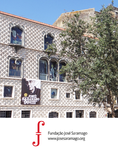Olisipo
History of LisbonRoman towns and cities in Portugal
Municipium Cives Romanorum Felicitas Julia Olisipo (in Latin: Olisippo or Ulyssippo ; in Greek: Ὀλισσιπών, Olissipṓn, or Ὀλισσιπόνα, Olissipóna) was the ancient name of modern-day Lisbon while part of the Roman Empire.
Excerpt from the Wikipedia article Olisipo (License: CC BY-SA 3.0, Authors).Olisipo
Praça de Armas, Lisbon Alfama (Santa Maria Maior)
Geographical coordinates (GPS) Address Website Nearby Places Show on map
Geographical coordinates (GPS)
| Latitude | Longitude |
|---|---|
| N 38.7122204 ° | E -9.1339731 ° |
Address
Miradouro do Castelo de São Jorge
Praça de Armas
1100-478 Lisbon, Alfama (Santa Maria Maior)
Portugal
Open on Google Maps










